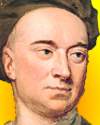
On 29 Apr 1667, John Arbuthnot was baptized, the Scottish mathematician, physician and satirist who introduced the subject of probability to English mathematicians. As a satirist, he created the John Bull character iconic of an Englishman.
One of the pamphlets he published was An Essay on the Usefulness of Mathematical Learning (1701), in which he sought to promote the study of mathematics as a "Service to Learning, Youth, and the Nation in general." You are likely to find much of what he wrote in the 18th century resonates as you read it in the 21st century!

On 29 Apr 1854, Henri Poincaré was born, a French mathematician, physicist, astronomer and a gifted interpreter of science to the public. Today's book pick is: The Value of Science: Essential Writings of Henri Poincare (Modern Library Science), by Henri Poincare. This volume collects his three most important books: Science and Hypothesis (1903); The Value of Science (1905); and Science and Method (1908). More than any other writer of the twentieth century, Henri Poincaré brought the elegant, but often complicated, ideas about science and mathematics to the general reader. His lucid and welcoming prose made him the Carl Sagan of his time, able to interprete the philosophy of science to scientists and nonscientists alike.
It is available from Amazon, typically about New from $20.70. Used from $7.79. (As of earlier time of writing - subject to change.)
 | All political parties die at last of swallowing their own lies. |
 | Il faut bien s'arrêter quelque part, et pour que la science soit possible, il faut s'arrêter quand on a trouvé la simplicité. Analyse data just so far as to obtain simplicity and no further. |
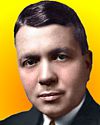 | Life is not a miracle. It is a natural phenomenon, and can be expected to appear whenever there is a planet whose conditions duplicate those of the earth. [Stating his belief that planets supporting life cannot be rare.] |
| Before you look at today's web page, see if you can answer some of these questions about the events that happened on this day. Some of the names are very familiar. Others will likely stump you. Tickle your curiosity with these questions, then check your answers on today's web page. | |
| Births | |
 | Harold C. Urey, born 29 Apr 1893, was awarded the Nobel Prize for Chemistry in 1934 for his discovery of deuterium, the heavy form of hydrogen (1932). He was active in the development of the atomic bomb. In 1953, he worked with Stanley L. Miller exploring the effect of an electrical discharge in a mixture of hydrogen, methane, ammonia, and water. What was the purpose of the electrical discharge experiment? |
| Deaths | |
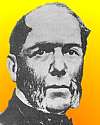 | Abraham Gesner (1797-1864) was a Canadian chemist and geologist who pioneered the extraction of kerosene (which he named) by the dry distillation of asphalt rock. This replaced the then current fuel for oil lamps because it was cleaner-burning. What fuel did kerosene replace in oil lamps? |
 | Georg Brandt (1694-1768) was a Swedish chemist who was the first person to isolate a certain element in metallic form (1730). Ancient Egyptians used tiny amounts of this element to make their glass blue. It is added to steel to make it harder and have a higher melting point. Traces of it are found in meat and dairy products as vitamin B-12. What was this element Brandt isolated? |
| Events | |
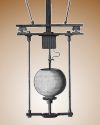 | On 29 Apr of a certain year, the first demonstration in the U.S. of street lighting using electric arc lamps took place in Cleveland, Ohio. In which decade were electric arc lamps first demonstrated for street lighting in the U.S.? |
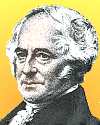 | On 29 Apr 1820, Thomas Hancock’s first patent was dated. He pioneered applications and processes which founded an industry in Britain. Which industry was founded by Thomas Hancock in Britain? |
Fast answers for the previous newsletter for April 28: Gene Shoemaker • Dutch • the number of chromosomes is the same in all body cells of a single species • the Kon Tiki • Erwin Schrödinger.
 If you enjoy this newsletter, the website, or wish to offer encouragement or ideas, please send feedback by using your mail reader Reply button.
If you enjoy this newsletter, the website, or wish to offer encouragement or ideas, please send feedback by using your mail reader Reply button. Your click on a Facebook, StumbleUpon, or other social button on the site webpages is also a welcome sign of appreciation. Thank you for using them.
© This newsletter is copyright 2020 by todayinsci.com. Please respect the Webmaster's wishes and do not put copies online of the Newsletter — or any Today in Science History webpage. (If you already have done so, please remove them. Thank you.) Offline use in education is encouraged such as a printout on a bulletin board, or projected for classroom viewing. Online, descriptive links to our pages are welcomed, as these will provide a reader with the most recent revisions, additions and/or corrections of a webpage. For any other copyright questions, please contact the Webmaster by using your mail reader Reply button.
--
If you do not want to receive any more newsletters, Unsubscribe
To update your preferences and to unsubscribe visit this link
Executive Real Estate Business Class
-
"It was like a man with wings. It wasn't like anything you'd see on TV or in a monster movie." ...
About the publisher
Search This Blog
Blog Archive
-
▼
2021
(585)
-
▼
April
(57)
- On This Day for April 30 - George Washington inaug...
- Newsletter for Friday 30 April.
- On This Day for April 29 - British royal wedding, ...
- Newsletter for Thursday 29 April.
- On This Day for April 28 - Benito Mussolini execut...
- Newsletter for Wednesday 28 April.
- On This Day for April 27 - Independence for Sierra...
- Newsletter for Tuesday 27 April.
- On This Day for April 26 - Chernobyl nuclear accid...
- Newsletter for Monday 26 April.
- On This Day for April 25 - Hubble Space Telescope ...
- See How They Tracked Down Bin Laden
- Newsletter for Sunday 25 April.
- On This Day for April 24 - Installation of Pope Be...
- Newsletter for Saturday 24 April.
- On This Day for April 23 - Voting for Eritrea's in...
- Earth Day Bonus: Become a Climate Action Expert
- On This Day for April 22 - First Earth Day, Miguel...
- On This Day for April 21 - French elections held, ...
- Newsletter for Wednesday 21 April.
- On This Day for April 20 - Explosion on the Deepwa...
- Newsletter for Tuesday 20 April.
- On This Day for April 19 - American Revolution beg...
- Newsletter for Monday 19 April.
- On This Day for April 18 - The midnight ride of Pa...
- Newsletter for Sunday 18 April.
- On This Day for April 17 - Canada Act proclaimed, ...
- Newsletter for Saturday 17 April.
- On This Day for April 16 - Harriet Quimby's flight...
- Newsletter for Friday 16 April.
- On This Day for April 15 - Sinking of the Titanic,...
- Newsletter for Thursday 15 April.
- On This Day for April 14 - Abraham Lincoln shot, J...
- On This Day for April 13 - Alfred Dreyfus imprison...
- Newsletter for Tuesday 13 April.
- On This Day for April 12 - Launch of first space s...
- Newsletter for Monday 12 April.
- John of Gaunt: father of England’s medieval monarchy
- On This Day for April 11 - Napoleon's abdication a...
- Newsletter for Sunday 11 April.
- On This Day for April 10 - Anschluss approved in A...
- On This Day for April 9 - Fall of Baghdad, Jørn Ut...
- Newsletter for Friday 9 April.
- On This Day for April 8 - Celebration of the Buddh...
- On This Day for April 7 - Jack Nicklaus's first Ma...
- Newsletter for Wednesday 7 April.
- On This Day for April 6 - Olympics revived, Raphae...
- On This Day for April 5 - Battle of Maipú, Colin P...
- The history and origins of Easter
- On This Day for April 4 - Martin Luther King, Jr.,...
- Newsletter for Sunday 4 April.
- On This Day for April 3 - Implementation of the Ma...
- Newsletter for Saturday 3 April.
- On This Day for April 2 - Death of Pope John Paul ...
- Newsletter for Friday 2 April.
- On This Day for April 1 - Creation of Nunavut, Ser...
- Newsletter for Thursday 1 April.
-
▼
April
(57)
-
Blogroll
-
About
HistoryFact










0 comments:
Post a Comment